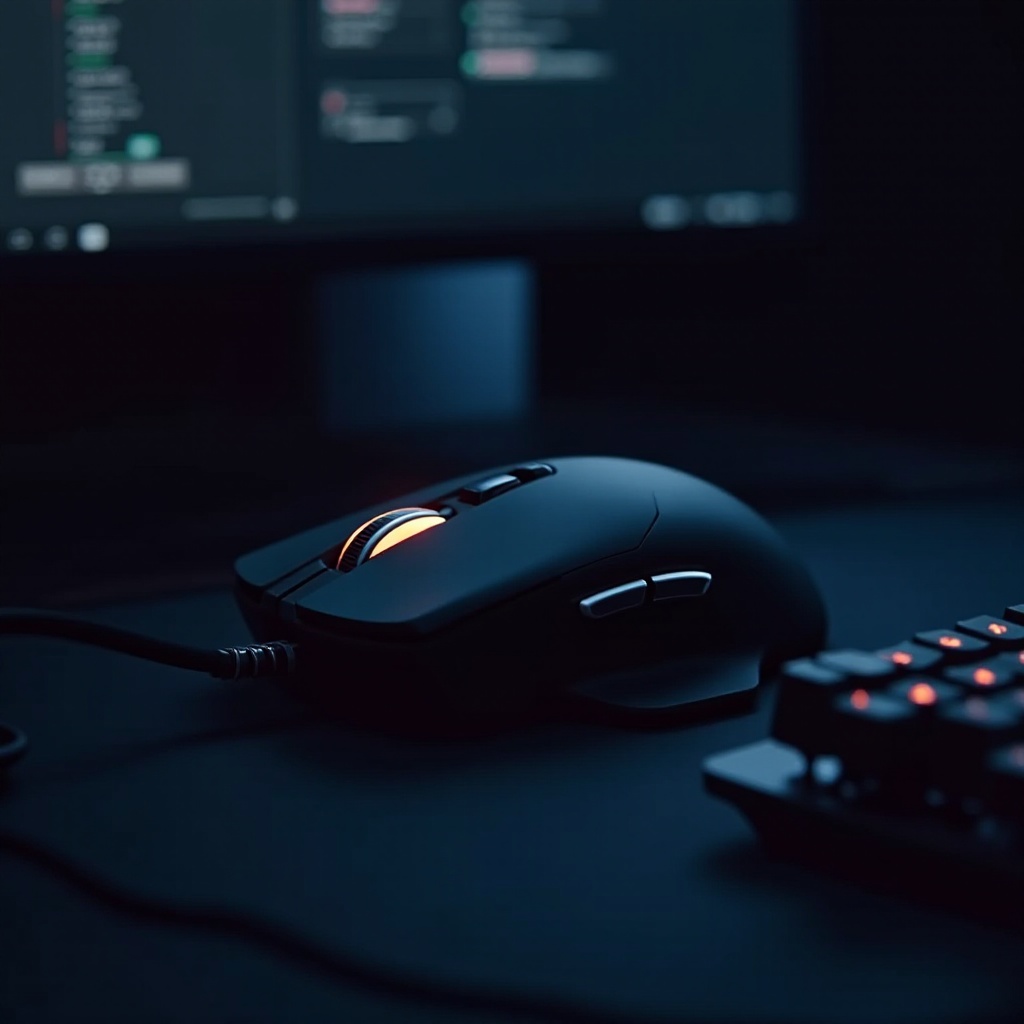Introduction
Achieving the perfect mouse sensitivity can dramatically transform your interaction with computer systems, whether you’re navigating through documents or engaging in an intense gaming session. Adjusting this setting lets users find the right balance between quickness and accuracy. This guide provides a step-by-step approach on modifying mouse sensitivity across various operating systems, tips for optimization tailored to gaming or productivity tasks, and guidance on addressing common sensitivity issues.

Understanding Mouse Sensitivity
Mouse sensitivity is a crucial factor in customizing your computing experience. Essentially, it dictates how far your cursor moves on your screen relative to how much you move your physical mouse. A higher sensitivity setting results in the pointer covering a larger screen area with minimal mouse movement.
This feature influences every action you perform on your computer, from document editing to graphic designing and gaming. Grasping the connection between your mouse’s physical movement and on-screen response is key to adjusting a sensitivity level that feels comfortable and effective for your daily tasks.
Changing Mouse Sensitivity on Various Operating Systems
Adjusting mouse sensitivity requires different steps based on your operating system. We explore the methods for both Windows and macOS users below.
Adjusting Sensitivity in Windows
- Open Settings: Click the Start menu and select ‘Settings’.
- Access Devices: Navigate to ‘Devices’ and choose ‘Mouse’ from the menu on the left.
- Mouse Properties: Click on ‘Additional mouse options’ to open a new window.
- Change Speed: In the ‘Pointer Options’ tab, locate the ‘Motion’ section. Move the slider to decrease or increase sensitivity.
- Apply Settings: Click ‘Apply’ then ‘OK’ to save your changes.
Modifying Mouse Settings on macOS
- Open System Preferences: Click the Apple logo at the top-left of your screen, then select ‘System Preferences’.
- Select Mouse: Click on the ‘Mouse’ option.
- Adjust Tracking Speed: Modify sensitivity by moving the ‘Tracking Speed’ slider.
- Confirm Changes: Close the window to save your desired settings.
Customizing Sensitivity for Gaming and Productivity
The ideal mouse sensitivity can vary based on how you utilize your device. Different needs for gaming and work environments can dictate specific settings.
Finding the Ideal Balance for Gaming
In gaming, precision and sensitivity can significantly affect your performance, making it vital to tailor your settings:
- Low Sensitivity: Suitable for strategy games that need precise targeting.
- High Sensitivity: Useful for action games requiring fast moves.
Testing multiple settings is crucial to finding the configuration that feels most intuitive for varying gaming scenarios.
Optimizing for Work Efficiency
For productivity, adjusting the mouse sensitivity can streamline your tasks:
- Micro-Movements: Opt for lower sensitivity when details matter, such as in graphic design.
- Speed: Choose medium to high sensitivity for general tasks like browsing and document handling.
Appropriately tuning these settings can enhance workflow by providing necessary precision or speed based on task demands.
Employing External Software for Enhanced Precision
Third-party software solutions can offer more control over mouse settings, extending beyond standard operating system configurations.
Overview of Recommended Tools
- Logitech Options: Best for Logitech devices, offering extensive sensitivity customization.
- Razer Synapse: Ideal for Razer gear, allowing detailed DPI and sensitivity control.
- SteerMouse: Designed for macOS users needing deeper customization options.
Step-by-Step Configuration Guide
- Install the Software: Download and install the software matching your hardware.
- Access Settings: Launch the software to enter the mouse settings menu.
- Adjust Sensitivity/DPI: Utilize the toolset to fine-tune sensitivity.
- Test and Modify: Verify settings within your work or gaming context, adjusting as required.

Troubleshooting Common Mouse Sensitivity Issues
Even with ideal settings, problems may arise that hamper your user experience. Identifying and fixing these issues is crucial.
Identifying Causes of Instability
- Hardware Issues: Ensure the mouse is clean and operational.
- Software Conflicts: New updates or installs might disrupt mouse settings.
Restoring Default Settings
If persistent issues occur, reverting to default settings may resolve discrepancies:
- Windows users can restore by accessing the mouse settings and selecting ‘Reset’ under pointer options.
- macOS users can manually adjust back to a central point to simulate default settings.

Conclusion
By mastering your mouse sensitivity, you can significantly enhance your computer interactions. Following this guide will aid you in optimizing settings according to your specific needs and resolving any encountered issues. Whether tuning settings for optimum work performance or gaming triumph, you’ll secure the efficiency and comfort essential in your digital life.
Frequently Asked Questions
How do I know the right sensitivity for gaming?
Experiment with different settings while playing your favorite games, adjusting as needed for precision and comfort.
Can changing sensitivity affect my hand ergonomics?
Yes, improper sensitivity might lead to strain. Look for a level that offers control without excessive movement.
Is there a difference between DPI and sensitivity?
DPI measures the mouse’s sensor capability, while sensitivity pertains to software adjustments in your system. Both affect pointer movement.


